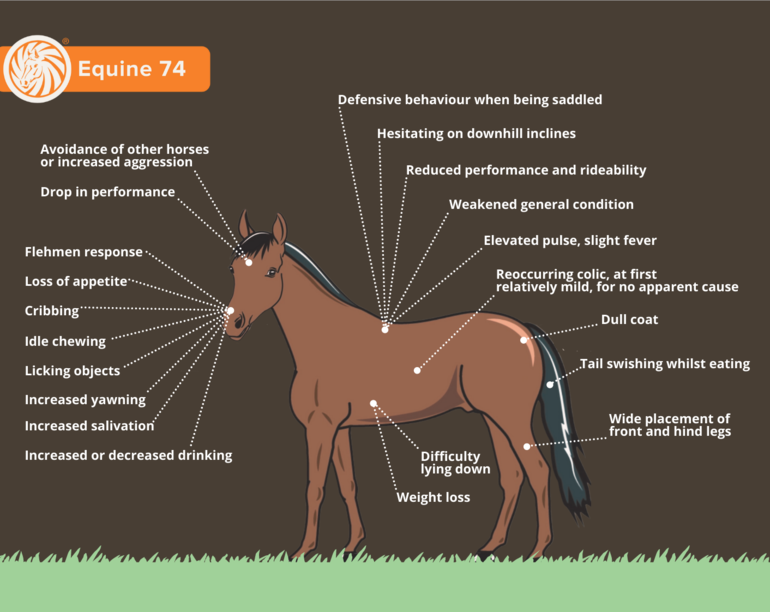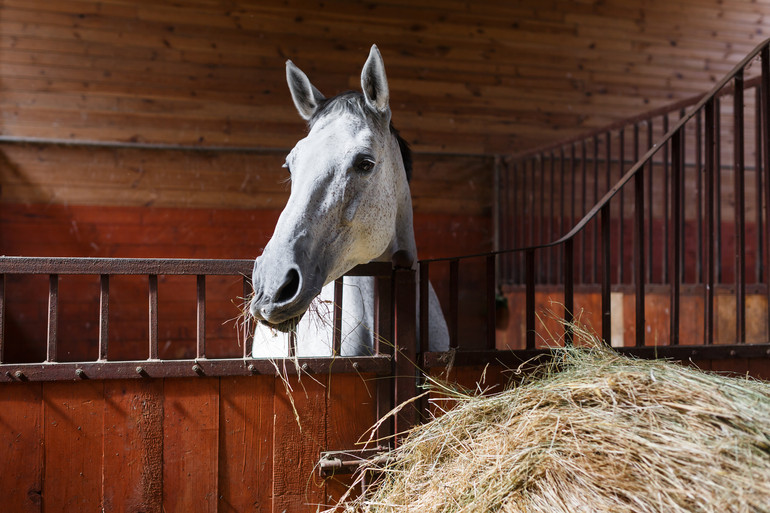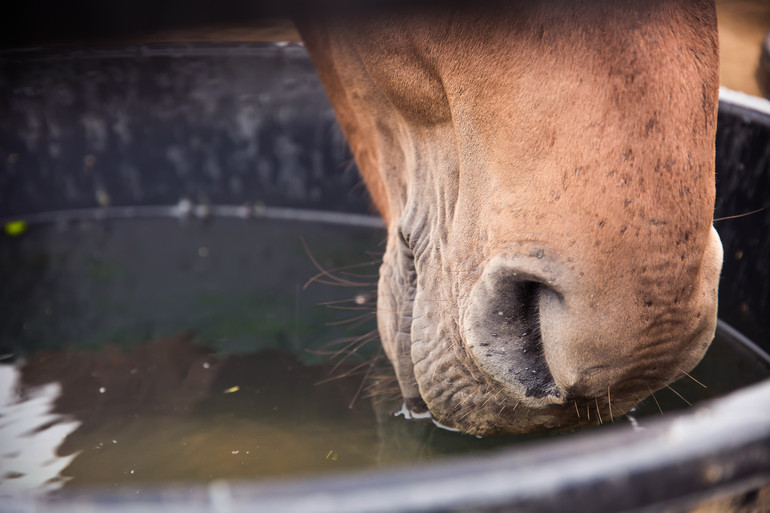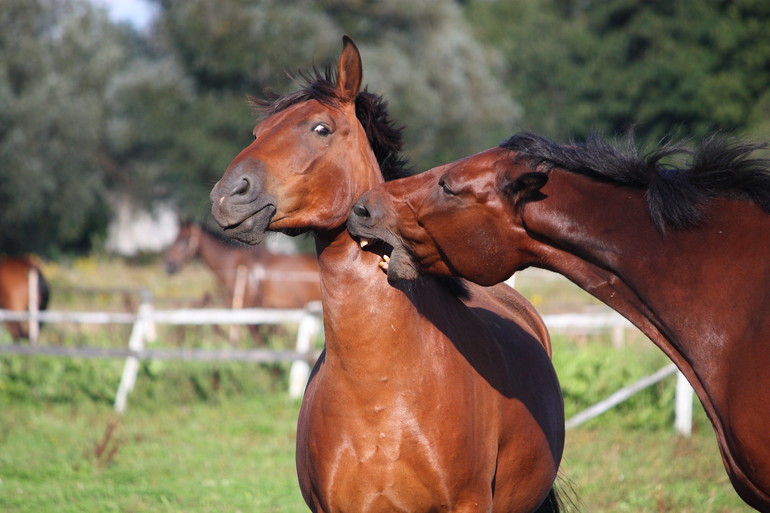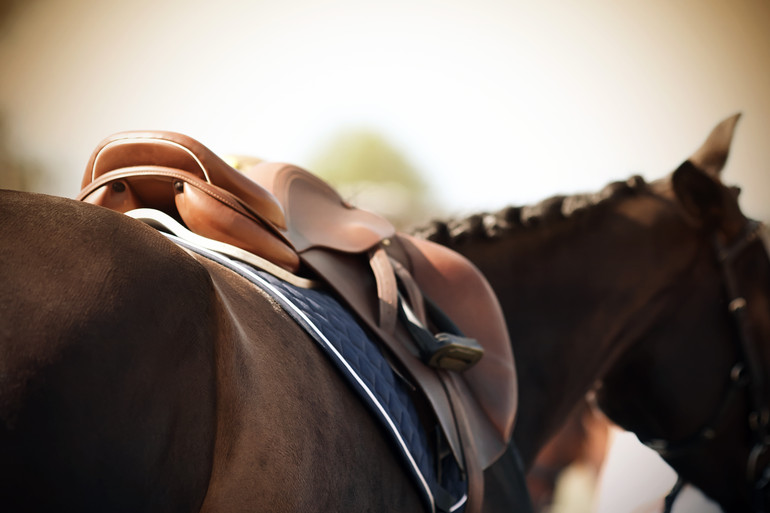The symptoms are manifold and not always clear.
There is not one cause for a peptic ulcer in the horse that needs to be considered. Instead, we are dealing with several factors which individually or "together" favour the occurrence of peptic ulcers.
The symptoms vary from horse to horse.
Just as varied are the signs - or symptoms - of a stomach ulcer from horse to horse. There is therefore no uniform symptom picture that applies universally to every stomach patient.
Only by means of a gastroscopy can stomach ulcers be clearly diagnosed.
In most cases, the symptoms are gradual, which is why in many cases they initially remain undetected. This is why peptic ulcers are often only detected at a late stage.
The sooner the symptoms are recognized, the sooner action can be taken.
In order for this to work, we provide you with a list of the most common symptoms below.
For your convenience we have allocated symptoms into categories. Simply click on the symptom you want to learn more about.
Feeding and watering behaviours
In the barn and out at pasture
- Difficulty lying down
- Wide placement of front and hind legs
- Defensive behaviour when being saddled
- Avoidance of other horses or increased aggression
Other unusual behaviour
- Cribbing
- Flehmen response
- Increased yawning
- Licking objects
General state of health
- Weakened general condition
- Elevated pulse, slight fever
- Reoccurring colic, at first relatively mild, for no apparent cause
- Increased salivation
Decline in performance
- Drop in performance
- Reduced performance and rideability
- Hesitating on downhill inclines
Appearance
- Weight loss
- Dull coat
Equine74 Gastric counteracts the effects of constant stress-related acid problems with high mineral acid buffering. Learn more.
Horses suffering from stomach problems generally will have less appetite.
This often comes on gradually, for example when a horse doesn’t dive right into its feed like it usually does, starts to push its feed around with its nose or leaves part of the feed uneaten.
It also may not be eating all of its roughage.
People who’ve had stomach ulcers know these symptoms: when the stomach goes on strike, one doesn’t feel like eating.
The stomach contracts during digestion, and this causes pain, especially in areas where the stomach lining is damaged.
When gastric acid comes in contact with an inflamed area, this leads to an unpleasant burning sensation.
Known as a sign of submissiveness, idle chewing may also indicate stomach problems.
The horse moves its mouth or chews without food.
Unlike idle chewing as sign of submissiveness, the horse will grind its lower jaw as if it is chewing on food.
This involves more than just a few chewing movements.
Equine 74 Gastric Make your horse feel happy inside!
Natural acidbuffer, optimized pH-level in horses stomach and gut that helps for better performance and satisfaction without compromise. Because good for your horse should also mean good for you!
3. Tail swishing whilst eating
Tail swishing during feed consumption is very atypical for healthy horses and a clear sign of gastric ulcers.
Tail swishing is a sign of pain and discomfort.
The horse experiences pain through the consumption of food and its subsequent digestion and responds by swishing its tail.
4. Increased or decreased drinking
One cannot say that all horses with stomach ulcers will drink more water, or less of it.
This can vary greatly.
It may be that the horse consumes substantially more, but also substantially less water.
Because horses drink when they want, this problem is often overlooked or can be difficult to control.
A 600 kg horse will drink about 30-60 litres per day depending on work performance, weather and keeping.
When a horse lies down, the stomach is contracted by the movement, and this can mean pain for the horse.
The horse may appear to be thinking about how it wants to lie down, hesitating, possibly needing several attempts and then perhaps preferring to stand.
One may also often observe that once the horse lies down, it stays down.
Horses with stomach problems lie down often and consequently spend less time eating, which only worsens the problem further: the stomach continues to produce acid, which in turn can attack the unprotected stomach walls without a buffer through the saliva for lack of feed – which brings us directly to the other extreme.
6. Wide placement of front and hind legs
Some horses stand with their front and hind legs far apart in order to bring relief to the stomach and intestines.
This should not be confused with the relief position of the forelegs that horses with laminitis adopt to shift weight to their hindlegs.
7. Defensive behaviour when being saddled
Stomach pain may trigger a defensive behaviour when the girth is tightened or even when the saddle is placed on the horse’s back.
The girth covers the area near the horse's stomach.
When the girth is tightened, the horse’s belly is pulled up and consequently the stomach as well.
This causes the gastric acid to enter the sensitive part of the stomach and can thus attack the damaged gastric mucosa, which can be extremely painful for the horse.
The horse may respond by kicking in the direction of the girth or the human applying it, beating its tail or even by trying to bite the human.
This is very typical for horses with gastric ulcers.
8. Avoidance of other horses or increased aggression
Horses suffering from stomach ulcers often have changed personalities.
The most tolerant horse can suddenly seem to transform into an aggressive troublemaker who upsets the whole herd, and the most sociable buddy may become a loner who prefers to stand by himself in the paddock away from the others.
Here is where you come into play as the animal’s owner and caregiver: solid knowledge of your horse’s personality and individual characteristics is extremely important in the ability to judge correctly whether you are dealing with a problem, a bad mood or something else.
If you are interested in more symptoms of gastric ulcer, click here.
Stay tuned for part two, with information about the remaining thirteen symptoms.



